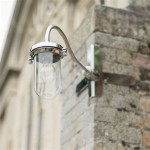How To Oil Outdoor Furniture
Outdoor furniture faces the elements year-round, making proper maintenance crucial for its longevity. Regular oiling is an essential part of this care routine, helping to protect the wood from the damaging effects of sun, rain, and temperature fluctuations. This article will guide you through the process of oiling outdoor furniture, providing detailed instructions and tips for optimal results.
Choosing the Right Oil
The first step is to select the appropriate oil for your furniture. Different types of wood and finishes require specific oils for optimal protection. For example, teak furniture benefits from teak oil, while cedar wood is best treated with cedar oil. Here's a breakdown of common oil types:
- Teak Oil: This oil is specifically formulated for teak wood, penetrating deep into the pores and enhancing its natural beauty. It also provides a protective barrier against UV rays, moisture, and mildew.
- Cedar Oil: As the name suggests, this oil is specifically designed for cedar wood. It helps preserve the natural color and aroma of cedar, while offering protection against weathering and insect infestations.
- Danish Oil: A popular choice for various hardwoods, Danish oil combines drying oils with varnish. It provides a protective finish while enhancing the wood's natural grain pattern.
- Tung Oil: This oil is derived from tung nuts and known for its durability and water resistance. It is suitable for various hardwoods, providing a long-lasting finish.
When selecting an oil, consider the following factors:
- Wood Type: Choose an oil specifically designed for the type of wood used in your furniture.
- Finish: Some oils are suitable for bare wood, while others are designed for previously oiled or varnished surfaces.
- Environmental Conditions: Consider the climate and weather conditions in your area. For example, in humid environments, a water-resistant oil might be preferable.
Preparing for Oil Application
Before applying oil, it's essential to prepare the furniture to ensure proper absorption and optimal results. This involves cleaning and sanding the surface, creating a foundation for a smooth and even oil application.
- Cleaning: Start by cleaning the furniture thoroughly with a mild soap and water solution. Use a soft brush or sponge to remove dirt, grime, and any existing residue. Allow the furniture to dry completely before proceeding.
- Sanding: For bare wood furniture, sanding is recommended to create a smooth surface for oil absorption. Use fine-grit sandpaper (180-220 grit) and sand the surface lightly in the direction of the grain. For previously oiled furniture, sanding may not be necessary, but a light sanding with a fine-grit sandpaper can help remove any dull or uneven areas.
Applying the Oil
Once the furniture is clean and prepared, you can apply the oil. This process involves applying a thin, even coat to the entire surface, allowing it to penetrate the wood and create a protective barrier.
- Application: Use a clean cloth or brush to apply the oil to the furniture. Work in thin, even coats, ensuring the entire surface is covered without over-applying. Avoid pooling or dripping.
- Drying: Allow the oil to dry completely according to the manufacturer's instructions. This may take several hours or even overnight, depending on the oil type and environmental conditions. The furniture should feel dry to the touch and not sticky.
- Second Coat: Apply a second coat of oil if needed. This provides extra protection and enhances the finish.
Maintaining Oiled Furniture
Regular maintenance is essential for prolonging the life of your oiled furniture. Here are some tips for keeping your outdoor furniture looking its best:
- Clean Regularly: Clean your furniture regularly with a mild soap and water solution to remove dirt, grime, and debris. This will help prevent the buildup of residue that can hinder oil penetration.
- Re-oil: Re-oil your furniture as needed, typically every 6-12 months, depending on the weather conditions and use. To determine if re-oiling is necessary, check for dryness, fading, or signs of weathering.
- Protect from Elements: Cover your furniture with a waterproof cover during inclement weather or when not in use. This will help prevent damage from rain, snow, and UV rays.
By following these steps, you can properly oil your outdoor furniture and extend its life, allowing you to enjoy its beauty and functionality for years to come.

How To Re Your Wood Furniture With Teak Oil Ramsle Glam

Applying Deck Doc Outdoor Furniture Oil

How To Oil Outdoor Furniture Finding Silver Pennies

How To Oil Outdoor Furniture 7 Easy Steps

How To Oil Outdoor Furniture Finding Silver Pennies

Our Step By Guide To Cleaning Teak Furniture

Applying Deck Doc Outdoor Furniture Oil

Teak Vs Linseed Oil On Eucalyptus Patio Furniture Everyday Old House

How To Apply Teak Oil Your Garden Furniture

How To Easily Re Eucalyptus Outdoor Furniture Everyday Old House







